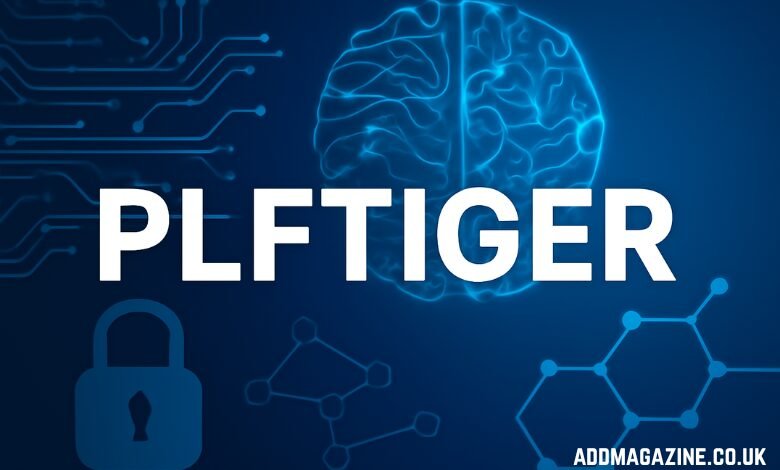The technology landscape is constantly evolving, driven by new innovations that promise to transform industries and streamline operations. One such emerging concept gaining traction is Plftiger. At its core, Plftiger represents the convergence of artificial intelligence (AI), cybersecurity, automation, and decentralized computing, aiming to create a unified framework that enhances operational efficiency, security, and innovation. Despite being in its early developmental stages, Plftiger has quickly captured the attention of technology professionals and enthusiasts alike, heralding a new era of digital intelligence and security. This article delves into the concept of Plftiger, exploring its components, its potential impact on various industries, and why it is generating so much interest in the tech community.
The Core Components of Plftiger
Plftiger is a multi-faceted concept that integrates several cutting-edge technologies into one unified framework. Its primary components include:
Artificial Intelligence (AI)
The backbone of Plftiger is its AI capabilities, which help to automate complex tasks, predict outcomes, and improve decision-making. The AI algorithms that power Plftiger are designed to learn and adapt continuously. This allows the system to handle vast amounts of data, identify patterns, and generate insights that can drive smarter decisions. Unlike traditional AI systems that function reactively, Plftiger’s AI focuses on proactive problem-solving, using predictive capabilities to anticipate potential challenges and address them before they arise.
Cybersecurity
As cyber threats become more sophisticated, the need for robust and resilient security systems has never been greater. Plftiger places cybersecurity at the heart of its design. The platform incorporates advanced encryption methods and behavioral analytics to protect data from unauthorized access, cyberattacks, and other threats. Unlike traditional centralized security systems, Plftiger employs decentralized encryption, reducing the risks associated with single points of failure and enhancing the overall resilience of the system.
Automation
Automation is a key driver behind Plftiger’s promise to increase efficiency and reduce the burden on human workers. By automating decision-making processes and routine tasks, Plftiger can optimize operations, reduce errors, and free up resources for more critical activities. This integration of AI with automation ensures that businesses can rely on systems that are not only intelligent but also capable of operating with minimal human intervention.
Decentralized Computing
Traditional IT systems rely heavily on centralized servers, creating single points of failure that can disrupt operations in case of a malfunction or cyberattack. Plftiger takes a different approach by emphasizing decentralized computing. This distributes data and resources across multiple nodes, making the system more resilient, scalable, and independent. By utilizing decentralized models, Plftiger aligns with the principles of Web3, offering greater transparency, autonomy, and security to organizations and users alike.
How Plftiger Works
The way Plftiger integrates these components is crucial to its effectiveness. At the heart of the platform is a decentralized network of computing nodes that facilitate data processing, storage, and analysis. These nodes work together to ensure that the system is both efficient and resilient, reducing the risks associated with centralization and improving scalability.
The AI algorithms that power Plftiger train on vast amounts of data, continuously analyzing it to identify patterns and trends. As these AI models learn and adapt, they generate insights to optimize decision-making, predict outcomes, and detect anomalies in real time. This ability to process large volumes of data and draw actionable insights is a defining feature of Plftiger, making it particularly valuable for industries such as finance, healthcare, and software development.
In terms of cybersecurity, Plftiger takes a comprehensive approach. It incorporates decentralized encryption methods, which store and transmit data securely without relying on a central authority. Furthermore, Plftiger uses behavioral analytics to detect suspicious activity and predict potential security threats before they occur. By using a combination of AI-driven insights and robust encryption techniques, Plftiger offers a higher level of security compared to traditional systems.
Automation within Plftiger allows for seamless decision-making and task management, with AI systems taking over routine processes and allowing human operators to focus on more strategic objectives. This integration of AI and automation enables organizations to become more agile and responsive to changes in their operating environment.
Applications of Plftiger Across Industries
Plftiger’s versatility and adaptability make it a highly promising technology across a range of industries. Some of the areas where it could have a significant impact include:
Software Development
In the field of software development, Plftiger could streamline the entire development lifecycle. AI-driven tools could assist in code generation, bug detection, and performance optimization. Automation could help in tasks such as continuous integration and deployment, while decentralized computing could provide greater reliability and speed for cloud-based applications. This could lead to faster development cycles and more robust software products.
Healthcare
Healthcare systems are increasingly reliant on data to drive decision-making, from patient records to clinical research. Plftiger could play a critical role in this data-driven environment by helping healthcare providers analyze vast amounts of data to predict patient outcomes, identify trends in diseases, and optimize resource allocation. Moreover, the decentralized nature of Plftiger keeps sensitive patient data secure, while AI algorithms assist in diagnosing conditions and suggesting treatments based on historical data and patient profiles.
Finance
The financial industry could benefit greatly from Plftiger’s predictive capabilities. By analyzing historical financial data, market trends, and economic indicators, Plftiger could assist in risk assessment, fraud detection, and investment strategy optimization. Its decentralized computing model would enhance security and reduce the risks associated with centralized financial systems, such as breaches and system failures.
Government and Public Sector
Governments and public sector organizations could use Plftiger to improve their data management and decision-making processes. With its ability to handle large datasets and make predictions, Plftiger could assist in areas like public health, crime prevention, and resource distribution. Moreover, the decentralized nature of the platform could increase transparency in government operations, reducing the risks of corruption and ensuring that data remains secure and accessible to authorized individuals.
Plftiger’s Integration with Existing Technologies
One of the key advantages of Plftiger is its modular design, which allows it to be easily integrated with existing technology infrastructures. Whether it’s a large enterprise, a small startup, or a government organization, Plftiger’s flexibility makes it adaptable to various environments.
The integration of Plftiger with existing IT frameworks would be crucial for its widespread adoption. Many businesses today rely on legacy systems that are deeply embedded in their operations. For such organizations, transitioning to new technologies can be a significant challenge, often requiring substantial investment and time. Plftiger, with its modular approach, is designed to work seamlessly with a wide range of platforms and applications, making it easier for businesses to adopt its capabilities without overhauling their entire infrastructure.
Plftiger’s decentralized architecture also supports the integration of various APIs and data ecosystems. This ability to connect with different platforms is important because it allows organizations to maintain their existing tools and systems while benefiting from the enhanced capabilities that Plftiger offers. This approach reduces the barriers to adoption, enabling a smoother transition and a quicker return on investment.
Furthermore, the decentralized nature of Plftiger can enhance collaboration across different organizations and sectors. In industries like healthcare or finance, where data sharing is critical for achieving more comprehensive insights and improving decision-making, Plftiger’s ability to connect disparate systems and data sources could foster more efficient and effective collaborations. By allowing organizations to share data securely and in real time, Plftiger could help break down silos and improve coordination between entities that may have previously struggled to work together due to technical or security concerns.
Challenges and Future Potential
While Plftiger holds immense promise, developers still face several challenges before they can fully realize it. One primary obstacle is the technical complexity of integrating AI, cybersecurity, automation, and decentralized computing into a cohesive and scalable system. Moreover, the widespread adoption of Plftiger would require organizations to re-evaluate their existing infrastructure and potentially make significant investments in new technologies.
Another challenge is regulatory compliance. As Plftiger integrates AI and decentralized technologies, it will need to adhere to a complex web of regulations and standards, particularly in industries like healthcare and finance. Ensuring that the platform remains compliant with data protection laws and other industry-specific regulations will be essential for its success.
Despite these challenges, the potential of Plftiger is undeniable. Furthermore as AI, cybersecurity, and decentralized computing continue to evolve, the platform could play a critical role in shaping the future of digital intelligence. By enabling more secure, efficient, and intelligent systems, Plftiger could revolutionize the way organizations handle data, predict risks, and automate decision-making.
Conclusion
Plftiger represents a bold vision for the future of technology, combining AI, cybersecurity, automation, and decentralized computing into a single, unified platform. While still in its early stages, the concept has already sparked significant interest in the tech world, with its potential to transform industries ranging from software development to healthcare and finance. Furthermore by leveraging the power of AI-driven insights, robust security protocols, and decentralized systems, Plftiger promises to enhance efficiency, security, and innovation in the digital age. While challenges remain in terms of integration and regulatory compliance, the future of Plftiger looks promising, and it could play a pivotal role in shaping the next generation of digital intelligence.



